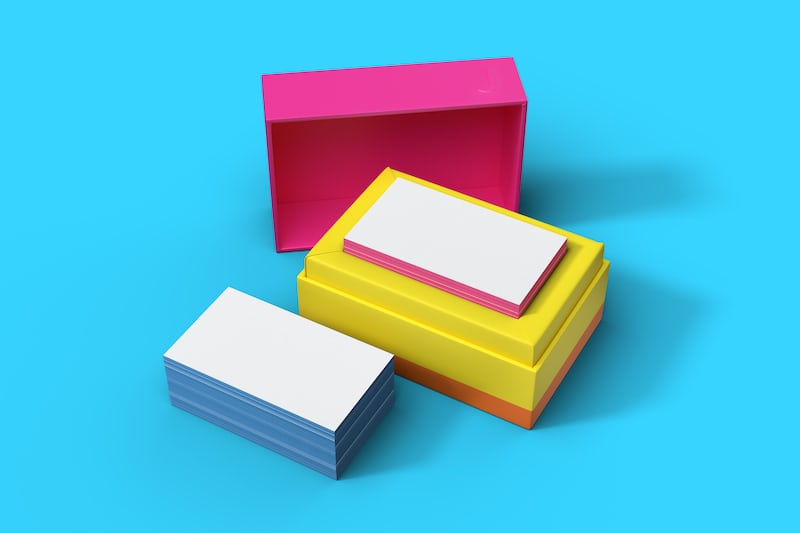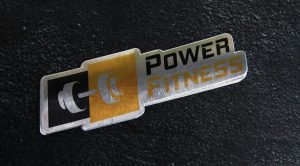When it comes to making a lasting impression in the business world, your business card can play a crucial role. A well-designed business card can not only provide essential contact information but also showcase your brand and personality. With so many options available, it can be challenging to come up with unique and creative business card ideas that stand out from the competition.
Luckily, there are plenty of resources available to help inspire your next business card design. From modern and minimalist to bright and playful, there are endless possibilities to explore. By incorporating unique design elements and thinking outside the box, you can create a business card that truly reflects your brand and leaves a lasting impression on potential clients and collaborators.
Whether you’re a startup entrepreneur or an established business owner, investing in a high-quality business card is essential for making a strong first impression. So why settle for a generic design when you can create a custom business card that truly stands out? With the right inspiration and a bit of creativity, you can design a business card that represents your brand and sets you apart from the competition.
Importance of Business Cards
When it comes to promoting your profession or business, business cards are still a crucial tool. They are an effective way to make a strong first impression and showcase your brand identity. In this section, we will discuss the importance of business cards in detail.
First Impressions
The first impression is the most important impression. When you meet someone for the first time, it’s essential to create a lasting impression. A business card is an excellent tool to do that. It provides a tangible representation of your brand and professionalism. It shows that you are prepared and serious about your business.
Brand Image
Your brand image is everything. It’s the perception that people have about your brand. A well-designed business card can help you create a positive brand image. It’s an opportunity to showcase your brand identity, including your logo, brand colors, and brand values. A professional-looking business card can help you establish credibility and trust with potential clients.
When designing your business card, make sure it aligns with your brand image. Choose colors, fonts, and designs that reflect your brand personality. Your business card should be consistent with your other marketing materials, such as your website and social media profiles.
In conclusion, business cards are still an important tool for promoting your profession or business. They create a strong first impression and help establish your brand identity. Make sure your business card aligns with your brand image and reflects your professionalism.
Designing Your Business Card
When designing your business card, it’s important to keep in mind that it’s often the first impression potential clients or customers will have of your brand. Therefore, it’s essential to create a design that is both professional and memorable. Here are some key elements to consider when designing your business card.
Choosing the Right Colors
Colors play a crucial role in the overall look and feel of your business card. It’s important to choose colors that align with your brand and convey the right message. For example, if your brand is associated with luxury or sophistication, you might want to use deep, rich colors like navy blue or burgundy. On the other hand, if your brand is more playful or creative, you might want to use brighter, more vibrant colors like yellow or orange.
When choosing colors for your business card, it’s also important to consider color psychology. Different colors can evoke different emotions and feelings in people, so choose colors that align with the message you want to convey.
Typography and Text
Another important element of your business card is the typography and text. Choose fonts that are easy to read and align with your brand’s style. Avoid using too many different fonts, as this can make your card look cluttered and unprofessional.
In terms of text, include only the essential information, such as your name, job title, and contact information. Make sure the text is legible and easy to read, even at a small size.
Incorporating Images and Logos
Images and logos can help make your business card more memorable and visually appealing. If you have a logo, be sure to include it on your card. You might also consider incorporating relevant images or graphics that align with your brand or industry.
When using images or logos, make sure they are high-quality and don’t detract from the overall design of your card. Keep in mind that less is often more when it comes to design, so don’t overcrowd your card with too many images or graphics.
Overall, designing a business card that effectively represents your brand requires careful consideration of various elements, including colors, typography, and images. By creating a design that is both professional and memorable, you can make a lasting impression on potential clients and customers.
Unique Business Card Ideas
If you want to make a strong impression on potential clients or partners, a unique and memorable business card design is a great way to do it. Here are a few ideas to get you started:
Minimal and Elegant
Sometimes, less is more. A simple, clean design can be just as effective as a busy one. Consider using a unique shape, like a circle or square, to make your card stand out. You can also experiment with different materials, like metal or wood, to create a more sophisticated look.
Modern and Contemporary
If you want to convey a sense of innovation and forward-thinking, a modern business card design might be the way to go. Think bold typography, bright colors, and geometric shapes. You can also incorporate technology, like QR codes or augmented reality, to create an interactive experience for the recipient.
Vintage and Sophisticated
For a more classic and refined look, consider a vintage-inspired design. Think ornate typography, muted colors, and intricate patterns. You can also experiment with different textures, like letterpress or embossing, to create a tactile experience.
No matter what style you choose, make sure your business card reflects your brand and personality. Keep it simple, memorable, and professional, and you’ll be sure to make a lasting impression.
Interactive Business Cards
Interactive business cards are a great way to make a lasting impression on potential clients and business partners. These eye-catching cards are designed to engage the recipient and leave a lasting impression. In this section, we will explore some of the most striking interactive business card ideas.
QR Code and Social Media
One of the most popular interactive business card ideas is to include a QR code that leads to your social media profiles or website. This is a great way to make it easy for potential clients to connect with you online. You can also include a call to action on your card, encouraging people to follow you on social media or visit your website.
Holographic and Transparent Cards
Holographic and transparent business cards are another great way to make a lasting impression. These cards use special printing techniques to create a 3D effect that is sure to catch the eye of anyone who sees it. Transparent cards are also a great option, as they allow you to showcase your logo or design in a unique way.
Geometric and Abstract Designs
Geometric and abstract designs are a great way to showcase your creativity and stand out from the crowd. These designs can be simple or complex, depending on your preferences. You can use bold colors, unique shapes, and interesting patterns to create a card that is truly one-of-a-kind.
In conclusion, interactive business cards are a great way to make a lasting impression on potential clients and business partners. By incorporating QR codes, social media profiles, holographic and transparent designs, and geometric and abstract designs, you can create a card that is both striking and memorable.
Customizing Your Business Card
When it comes to creating a business card, customization is key. You want your card to stand out and represent your brand effectively. Here are some ways to customize your business card:
Using Templates
If you’re not confident in your design skills, using a template can be a great option. Canva offers a variety of business card templates that you can customize to fit your needs. Simply choose a template that fits your style, and then add your own text, images, and branding elements. Canva templates are free and easy to use, making it a great option for those on a budget or with limited design experience.
Personalizing Your Design
To make your business card truly unique, it’s important to personalize your design. This can include adding your own images, choosing your own fonts, and selecting your own colors. Consider incorporating your logo or other branding elements to make your card stand out. You can also experiment with different layouts and designs until you find one that works for you.
Downloading and Printing
Once you’ve customized your business card, it’s time to download and print it. Canva allows you to download your design as a PNG or PDF file, which you can then take to a professional printer or print at home. When it comes to printing techniques, there are a variety of options available. You can choose from digital printing, offset printing, or letterpress printing, depending on your budget and desired look.
Overall, customizing your business card is an important step in creating a professional and memorable brand. With Canva’s templates and customization options, it’s easy to create a card that represents your business effectively.
Conclusion
Congratulations! You now have a wealth of knowledge on business card ideas to help your brand stand out. Remember that your business card is often the first impression you make on potential clients, so make it count. Here are some key takeaways to keep in mind:
- Your business card should be a reflection of your brand and the message you want to convey.
- Don’t be afraid to get creative with your design, whether it’s through unique shapes, bold colors, or playful fonts.
- Make sure your business card is legible and easy to read. Avoid clutter and use plenty of white space.
- Consider adding extra functionality to your business card, such as a QR code or a foldable design.
- Always proofread your business card to avoid any typos or errors.
By following these tips, you can create a business card that not only stands out but also effectively communicates your brand and message. Good luck!
Marietta Arnold is a branding and design enthusiast who draws inspiration from hobbies like hiking, photography, and art exploration. With a background in graphic design, she shares insights on branding strategies and logo design trends. Stay updated with Marietta’s work for the latest in branding and design.



